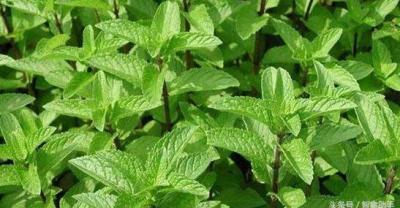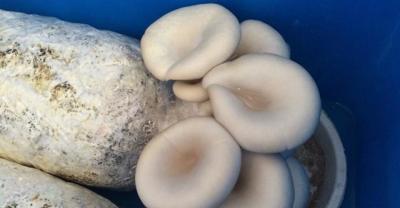Cultivation of peppermint: how to grow mint? When will peppermint seeds be planted and how many days will they germinate?
Peppermint, also known as wild mint, night incense, etc., is a perennial herb of the mint genus of Labiatae. Peppermint is one of the commonly used traditional Chinese medicine in China, which has the functions of refreshing and refreshing, soothing wind and dissipating heat, has high edible and medicinal value, and has attracted many farmers to plant. So, when will peppermint be planted? The planting time and method of peppermint are introduced as follows. Germination, germination in the soil is very slow, it takes 7 to 15 days!
I. planting time of peppermint
The planting time of peppermint is mainly determined by local climatic conditions. Guangdong, Hainan and other provinces can be cultivated all the year round, Jiangsu and Zhejiang around the "Qingming Festival". When the temperature picks up, Rain Water often has high humidity and is easy to survive after planting. In southwest China, planting is best when the rainy season begins. Open field cultivation and protected field cultivation can be adopted in North China and Northeast China. Once planted, it can be harvested continuously for 2-3 years.

Picture: peppermint planting
II. Planting methods of peppermint
1. Soil selection and preparation: mint is not strict with the soil and can be cultivated except for over-acidic and over-alkaline soil. Choose the scattered land with sufficient light on the edge of the pond, house, canal and so on under the conditions of drainage and irrigation, which is fertile and flat. Sand, lack of light, dry and easy to stagnant land is not easy to plant. Land that has been planted with mint needs about 3 years of leisure before it can be replanted. The yield was affected by underground residual roots. Soil preparation, deep ploughing, application of rotten compost, soil miscellaneous fertilizer and calcium superphosphate, bone meal, etc. as base fertilizer, 37500-45000 kg per hectare, rake fine, shallow hoe, turn fertilizer into the soil, broken soil, rake flat to make the bed 200cm wide.
two。 Seedling propagation: (1) rhizome propagation. The root cultivation was carried out in late April or late August. The plants with strong growth and no diseases and insect pests were selected as the mother plants in the field and planted according to the row spacing of 20 × 10 cm. After the aboveground stems and leaves were harvested in early winter, the rhizomes were left in place as seed plants; (2) ramet propagation. Peppermint seedlings about 15 cm high, should be between seedlings, replenish seedlings. The seedlings were transplanted by separate plants, and (3) cuttage propagation. The aboveground stem branches were cut into 10 cm long cuttings from May to June, and the seedlings were raised by cutting according to the row spacing of 7 × 3 cm on the whole seedling bed, and then transplanted to the field after rooting and germination.

Picture: peppermint planting
3. Transplanting method: peppermint was transplanted before germination in the early spring of the second year, early planting and early germination, long growth period and high yield. When planting, dig up the rhizome, select the sturdy, short Internode and disease-free rhizome as the seed root, cut it into a small section of 7mur10 cm long, and then cut a trench 10 cm deep on the finished border surface according to the row spacing of 25 cm. The seed root is placed obliquely in the ditch to cover the fine soil, step on the soil and water according to the plant distance of 10 cm.
4. Field management:
(1) check seedlings and replant. After the basic whole seedlings in the field, the seedlings should be checked in time, and the missing or sparse spots and slices should be replanted.
(2) weeding by ploughing. After the whole seedling, inter-row ploughing weeding, artificial weeding among plants, in order to preserve soil moisture, increase soil temperature, eliminate weeds and promote seedling growth. Ploughing and weeding for 2 times 3 times before closing. Remove weeds from the field before harvest to prevent the smell of other weeds from affecting the quality of peppermint oil.
(3) pick the heart and hit the top. When the plant is growing vigorously in May, the terminal bud should be removed in time to promote the growth of lateral branches, stems and leaves, which is beneficial to yield increase.
(4) topdressing at the right time. When the seedling height is 10ml 15cm, ditching and topdressing fertilizer is applied. Urea 10kg per mu is applied, and 5ml spray Shibao + 150g potassium dihydrogen phosphate + 150g urea is sprayed twice per mu after closure.
(5) Scientific watering. Peppermint needs more water in the early and middle stages, especially in the early stage of growth, the root system has not yet been formed and needs more water, generally watering one water for about 15 days, and 4 Mel water for 5 times from seedling emergence to harvest. After sealing, it should be irrigated gently to avoid excessive growth of stems and leaves, lodging, resulting in the shedding of the lower leaves and reducing the yield. The water will be cut off for 25 days before harvest.

[editor's conclusion] peppermint belongs to long-day crops and is sexually fond of sunlight, which needs special attention in the process of planting and maintenance. The above introduces the planting time and method of peppermint, hoping to help you!
- Prev

How much is the dental implant in Shenzhen?
The so-called "third pair of teeth" of human beings have lost their teeth and need to be repaired. Planting teeth is a good method, but many people give up because it takes half a year to grow teeth.
- Next

Tomato planting method and time: how to grow tomato? How to manage fertilization at Seedling stage in Tomato Seedling stage
The root system of tomato is well developed. the capillaries that absorb nutrients are mainly distributed in the 30 cm tillage layer, the deepest part can reach 1.5 meters, and the horizontal distribution of roots is straight.
Related
- Fuxing push coffee new agricultural production and marketing class: lack of small-scale processing plants
- Jujube rice field leisure farm deep ploughing Yilan for five years to create a space for organic food and play
- Nongyu Farm-A trial of organic papaya for brave women with advanced technology
- Four points for attention in the prevention and control of diseases and insect pests of edible fungi
- How to add nutrient solution to Edible Fungi
- Is there any good way to control edible fungus mites?
- Open Inoculation Technology of Edible Fungi
- Is there any clever way to use fertilizer for edible fungus in winter?
- What agents are used to kill the pathogens of edible fungi in the mushroom shed?
- Rapid drying of Edible Fungi

